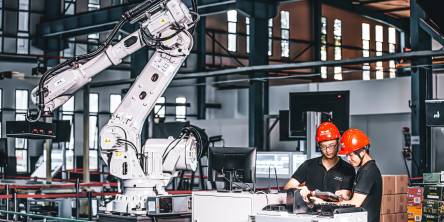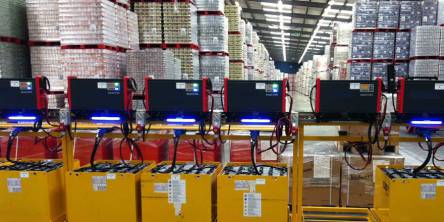How do Manual Butterfly Valves Compare to Ball Valves for Precise Flow Control?
When comparing flow control solutions, you may encounter the decision between manual butterfly valves and ball valves. Both types offer distinct advantages and play critical roles in various applications. Consisting of a disc that rotates on a central axis within the pipe manual butterfly valves effectively allow quick shut-off and regulation of flow with minimal effort. They are particularly notable for their compact design, making them suitable for space-constrained environments.
On the other hand, ball valves utilize a spherical disc with a hole through its center, aligned with the flow when open and perpendicular when closed. This design provides an excellent seal and reliable flow control, especially suitable for on/off applications. Their straightforward operation can be advantageous in systems that require durability and ease of maintenance.
Key Takeaways
- Both valve types offer efficient flow control with distinct mechanisms.
- Butterfly valves are compact and often favored in limited spaces.
- Ball valves provide a reliable seal for on/off operations.
Design and Operating Mechanisms
When you're choosing between manual butterfly valves and ball valves, understanding their design and the way they operate will help in making an informed decision for your application. Each type of valve has unique characteristics that affect their performance in flow control.
Design Variations and Applications
Butterfly valves consist of a circular disc that rotates on a stem to open or close the flow pathway. This disc, when fully open, aligns parallel to the flow, allowing for minimal obstruction. Conversely, when fully closed, the disc stands perpendicular to the flow, thus shutting off the passage. Butterfly valves are prized for their compact design, which makes them suitable for space-constrained applications. They come in different varieties such as the single-offset and double-offset configurations, each tailored for specific pressure and durability requirements. For instance, high-performance double-offset butterfly valves can withstand pressures up to 1,480 psi.
Ball valves, on the other hand, control flow using a ball with a hole through its center. A quarter-turn of the lever or handle rotates the ball to align the hole with the flow path (fully open) or perpendicular to it (fully closed), providing shut-off capabilities. A key design variation is the full-port or reduced port designs that define the relationship between the valve's bore size and the pipeline's size. The V-port ball valve, a notable variant, allows for precise flow control. In terms of applications, ball valves are often used for on/off control and are available for a wide range of temperatures and pressures.
Flow Control and Performance
Your choice between a butterfly valve and a ball valve affects flow regulation and flow direction control significantly. Butterfly valves offer efficient flow regulation because you can achieve incremental adjustments by rotating the disc. However, they may introduce a pressure drop even when fully open due to the disc's presence in the flow path. The design of the ball valve, primarily in the full-port version, typically means an almost zero pressure drop as the bore of the valve provides an unrestricted flow.
Performance in sealing and leakage prevention is another important aspect. Ball valves, with their seal design, offer tight shut-off with virtually zero leakage, making them suitable for applications where leak prevention is crucial. In contrast, butterfly valves may have some level of leakage due to the alignment and contact between the disc and seal upon closure. Yet, butterfly valves are often chosen for their ease of operation due to less rotational force required to actuate the valve compared to ball valves.
Installation, Costs, and Applications
When comparing manual butterfly valves to ball valves, key factors such as installation complexity, cost-efficiency, and suitability for various applications play a crucial role in deciding which valve fits your specific needs.
Suitability Across Applications
Butterfly valves, featuring a simplistic design with a rotating disc to regulate flow, are particularly advantageous in systems where space is at a premium. Due to their compact size and lightweight, they are often preferred for applications involving large pipe diameters. These valves are suitable for a multitude of applications, handling liquids, gases, and even semisolids efficiently. Their design ensures minimal obstruction to flow, making them an ideal choice for systems requiring quick shut-off capabilities.
Installation and Maintenance
The installation of a manual butterfly valve is generally less complicated than that of a ball valve given its lightweight nature and the absence of flanges or threads. This simplicity facilitates a swifter setup process and contributes to lower installation costs. Maintenance is also more straightforward due to fewer moving parts. In contrast, ball valves, which utilize a rotating sphere to control flow, may require more intricate connections and thus more meticulous installation, often involving bolting and the securing of flanges.
Cost-Effectiveness and Material Considerations
In terms of cost-effectiveness, butterfly valves are often less expensive than ball valves, especially in larger sizes. This is because they use less material, such as stainless steel, and are simpler in design. Over time, the reduced weight and material usage lead to cost savings in both shipping and handling. While butterfly valves can be more budget-friendly, ball valves may sometimes be the better choice for systems operating under extremely high pressure and temperature conditions due to their durability and tight sealing capabilities.
Choosing between a manual butterfly valve and a ball valve will largely depend on your specific budget, the application's requirement for pressure, temperature, and medium being controlled, and the material compatible with the medium. For handling oil, gas, or chemical applications, selecting the right valve can significantly improve system efficiency. When making your decision, consider alfa laval complete manual butterfly valves for a balance of performance and cost-efficiency.
Conclusion
In your selection between manual butterfly valves and ball valves for flow control, recognize that each has its unique advantages. Butterfly valves offer a compact design and ease of operation with less required torque, suitable for larger pipe diameters where space and weight are critical factors. In contrast, ball valves provide superior sealing capabilities and are ideal for systems requiring tight shut-off.
Choose a butterfly valve for applications needing simple throttling and where a slight pressure drop is permissible. For tasks where you must achieve a full, unobstructed flow or completely isolate a system, a ball valve is a robust option. Your decision should be driven by specific system requirements, balancing factors such as space, cost, and the nature of the fluid being controlled.
Similar Articles
Many companies love Lean Manufacturing because it makes things better. It boosts productivity, makes quality top-notch, and saves money while speeding up production. Lean Manufacturing isn't a strict set of rules; think of it as an intelligent way of thinking. It's all about cutting out unnecessary stuff (the "8 wastes") and focusing on what customers want.
Whether you’re a business owner, a supplier, a client, or just an admirer of the oil industry, there’s one thing you have to admit - this industry is among the most interesting ones in the world, and it’s getting more and more interesting every single year
Although the terms "laser engraver" and "laser cutter" are often used in the same context, there are a few differences between them. People have a huge misconception regarding the functions of both terms. In the present world scenario, laser machines can cut as well as engrave single-handedly.
The manufacturing industry, much like a lot of other industries worldwide, has been subjected to a whole lot of changes over the past few years. The cause? Lots of them but primarily the rapid evolution of technology.
The metal industry implies a diverse range of processes, skills and tools to manufacture parts, objects and even large scale structures. With the emergence of modern metalworking tools, a product receives a high level of uniformity and specificity.
In this modern world, all new types of technologies are invented for the benefit of human beings. There are many new things that are used in both commercial and military purposes, and one of the examples is aerospace fasteners. The use of this technology has increased with the invention of the fasteners.
The concept of automating a warehouse has been in place for several years. There is an increased demand for an automated warehouse in recent years due to various reasons. The costs of land and labor have gone up, companies are handling huge deliveries, and consumer expectations are high.
To stay competitive in today’s world, you need to develop technologies that cause less environmental damage. Leading forklift charger manufacturers are then launching a larger number of environmentally-friendly trucks that provide the same efficiency to fulfill their customer’s requirements.
Bend test machines are normally worldwide testing machines particularly arranged to examine bend strength, material ductility, fracture power, and toughness to fracture. Bend tests incline to be related to yielding metal and metals products. Bend test device and test methods are the same as flexure test gear.






6b16.jpg)


